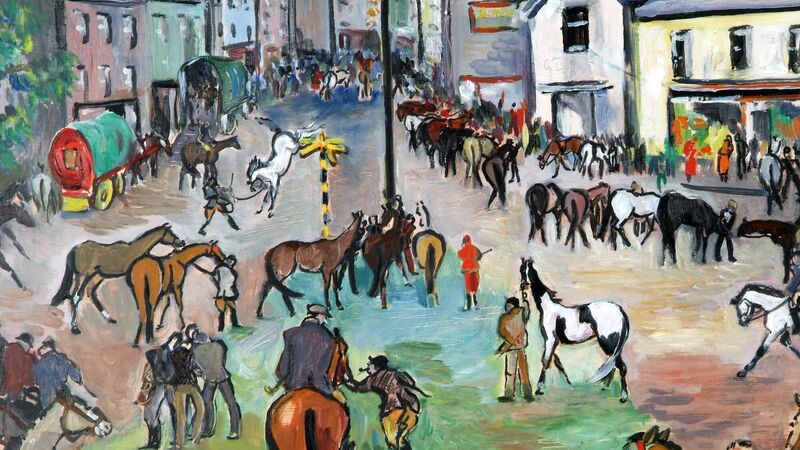Munster in 30 Artworks, No 27: Cahirmee Fair, by Glanmire-born artist Sylvia Cooke-Collis

A detail from Cahirmee Fair, by Sylvia Cooke-Collis. Picture courtesy of Crawford Art Gallery, Cork
Try from €1.50 / week
SUBSCRIBE
A detail from Cahirmee Fair, by Sylvia Cooke-Collis. Picture courtesy of Crawford Art Gallery, Cork
Sylvia Cooke-Collis’s Cahirmee Fair is a vivid celebration of the event that brings horse dealers from all over the country, and even further afield, to the North Cork town of Buttevant on 12th July every year.
The fair is so old that no one quite knows when it started, though what is known is that it originally ran at the Fair Field of Cahirmee, two miles west of Buttevant.
Newsletter
Music, film art, culture, books and more from Munster and beyond.......curated weekly by the Irish Examiner Arts Editor.
Newsletter
Music, film art, culture, books and more from Munster and beyond.......curated weekly by the Irish Examiner Arts Editor.
© Examiner Echo Group Limited